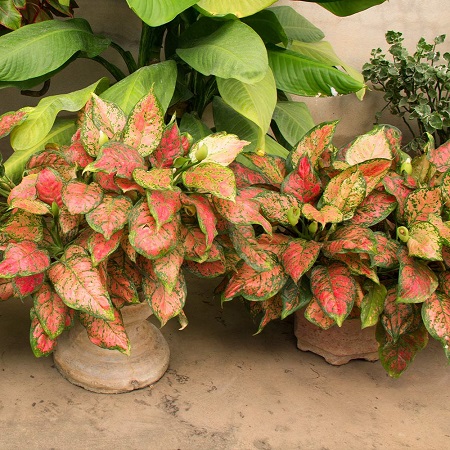
Have you recently noticed yellowing leaves on your Chinese Evergreen plant? This popular indoor plant is known for its ease of care and ability to thrive in low-light conditions. Yellow leaves usually signify that the plant isn’t getting enough light, water, or nutrition.
The good news is that most of these issues are easily fixable. Here are some common reasons why your Chinese Evergreen leaves might turn yellow.
Too Much or Too Little Water
To start, check your plant’s soil for dryness. Chinese Evergreens prefer the soil to be slightly moist but not soggy. The easiest way to check for underwatering is to stick your finger a few inches into the soil. If the soil feels dry, your plant likely needs water, hence the yellow leaves.
Give it a thorough soaking with room temperature water and pour the excess water from the drip tray. On the other hand, if the soil is too wet, let the soil dry out before watering again. It’s also very important that going forward, you adjust and stick to your watering schedule.
Use a Well-Aerated Potting Medium
Chinese Evergreen plants are sensitive to wet feet and therefore need a well-aerated potting medium that holds water without staying soggy. When the soil is constantly wet, it can restrict oxygen flow, leading the plant’s roots to drown in an airless environment. To prevent this, choose a potting mix formulated for houseplants or make your own with one part perlite and two parts peat moss.
Pro Tip: Fertilize your Chinese Evergreen with a balanced houseplant fertilizer.
Monitor the Light Levels
While Chinese Evergreens can tolerate low light conditions, they still need indirect light to stay healthy. The leaves may turn yellow if your plant needs more light. Move your plant to a brighter location, but keep in mind that overly bright light can also cause yellow leaves.
If you have moved your plant to a brighter location, it may react to the increased light. Therefore, moving your plant gradually is important. In doing so, you’re giving your Chinese Evergreen time to adjust to its new environment, making it less likely to experience any shock. Monitor the new light levels closely and ensure no direct sun is shining on your plant at any time of day.
Pro Tip: You can place sheer curtains over a south or west-facing window to filter out some of the brighter light when needed.
Temperature
Chinese Evergreens prefer temperatures between 60-75°F. If the temperature drops below this range, the leaves may turn yellow and drop. Keep your plant away from cold drafts or hot, dry air.
Look for Healthy Roots
Examine the leaves, stems, and roots for obvious signs of infestation, such as webbing, brown spots, or wilting. If you find pests in your plant, use insecticidal soap to get rid of them. If the roots are infected with fungus, consider repotting the plant in fresh soil mixed with a fungicide.
If you find any signs of rot or decay on the stems, prune these areas away using sterilized cutting tools.
Addressing these issues can help your Chinese Evergreen thrive and keep its leaves green and healthy. Remember to be patient, as the plant may take some time to recover. However, with the right care, your Chinese Evergreen will continue to bring beauty and life to your indoor space.
Rene’ Lategan is a part-time blogger that enjoys being outdoors. She spends her free time finding ways to make my life easier and more enjoyable and enjoys sharing the knowledge. You can visit his website at LiveByLists.com.
Related Articles & Free Email Newsletter Sign Up
How to Grow African Violets in a Greenhouse
How to Grow & Care for the Lipstick Plant



Comment here